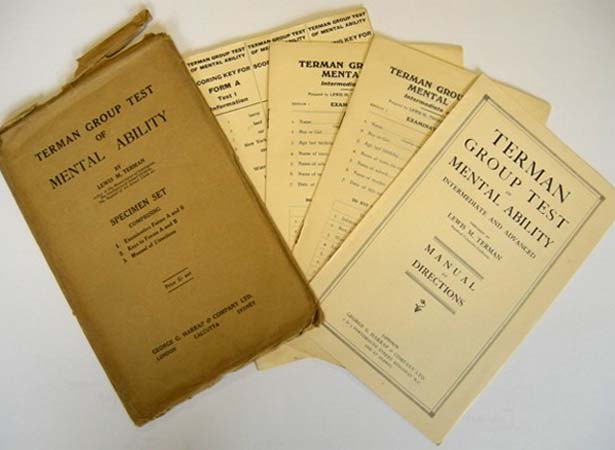
Following a US study tour by Frank Milner, the rector of Waitaki Boys’ High School in Ōamaru, the Education Department began applying the Terman Group Test of Mental Ability to all first-year post-primary school students.
While the Terman test had been used in several American states, this was said to be the first nationwide use of intelligence testing anywhere in the world. According to initial findings, the half-hour test of 8657 pupils produced information as valuable as that obtained from the rigorous (and expensive) entrance examinations.
Not everyone was convinced that the test was a valid measure of inherent aptitude. The Auckland Star editorialised that it was ‘fundamentally defective and fallacious’, claiming that several prominent American businessmen had recently flunked a similar test. Several educationalists cautioned that the results would be comparable only for pupils whose ‘home environments’ were similar.
The assistant director of education, Dr Ernest Marsden, did not entirely clarify matters when he stated that the Terman test ‘tested ability to learn largely by discovering what had already been learned in school’. But despite the doubters, intelligence testing was here to stay. By 1926 the Senate of the University of New Zealand was considering a similar test for its prospective students.
In 1936 the Terman test was replaced by the Otis Intermediate Intelligence Test, which had originally been devised during the First World War to evaluate candidates for the US Army’s officer corps. These tests generated an ‘intelligence quotient’ (IQ), a number by which individuals were ranked within their peer group. In some tests, IQ was the ratio of ‘mental age’ to chronological age; others (including Otis) made 100 the norm or median, with 140 the threshold for ‘high’ intelligence.
The Otis test contained 75 multiple-choice questions of increasing difficulty. One was: ‘A foot is to a man, and a paw is to a cat, the same as a hoof is to a what? (1) a dog; (2) a horse; (3) a shoe; (4) a blacksmith; (5) a saddle.’ Other typical questions asked students to identify the next number in a series, or the next shape in a sequence. Newspapers set Otis posers for their readers, while reassuring those unable to answer them that the test was ‘not for adults’.
Preliminary findings suggested that Kiwi youngsters were less acute than their American counterparts but sharper than Australian children. Girls did better than boys in verbal aptitude, while boys had superior spatial skills.
The Otis test remained in use in New Zealand schools until the late 1960s.
External links
How to cite this page
'Intelligence tests arrive in New Zealand schools', URL: https://nzhistory.govt.nz/page/intelligence-tests-arrive-new-zealand-schools, (Ministry for Culture and Heritage), updated 16-Feb-2023

Community contributions